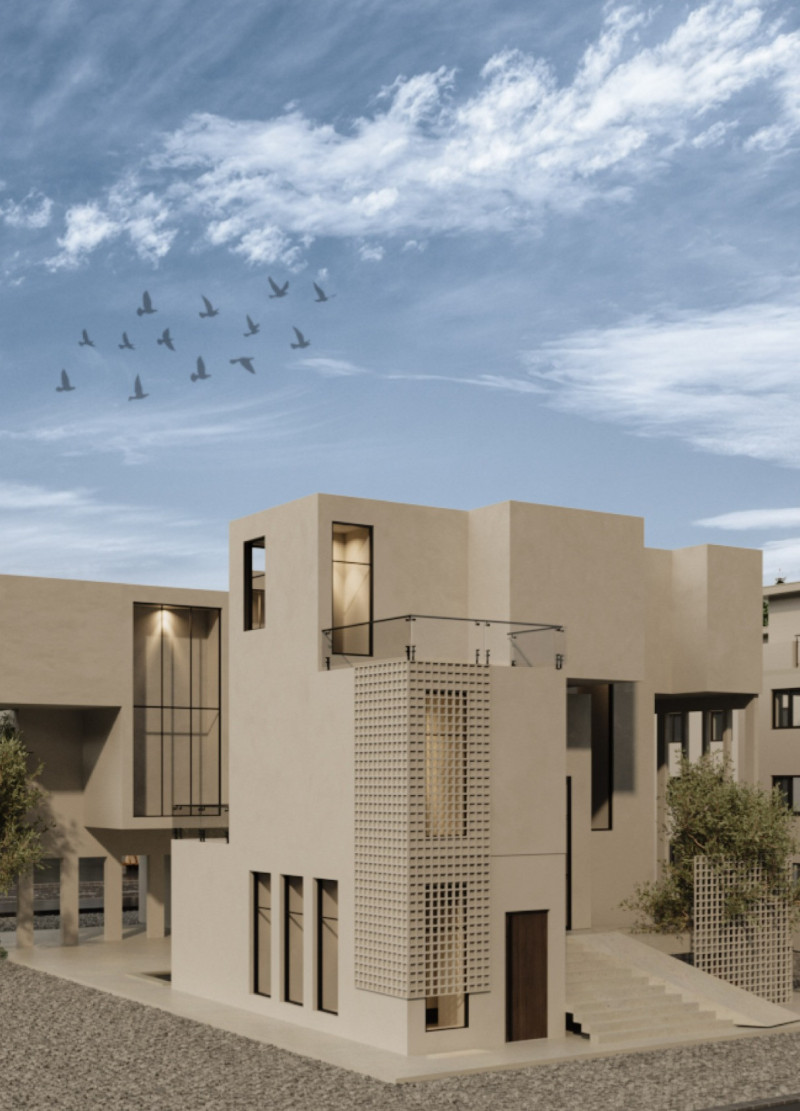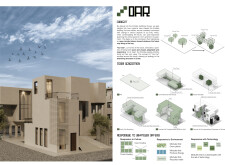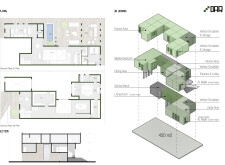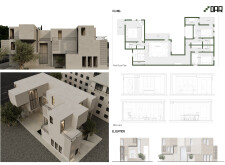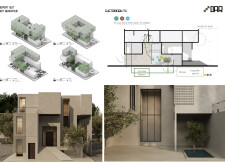5 key facts about this project
### Overview
Located in the heart of the Emirati landscape, the design integrates contemporary architectural practices with traditional cultural elements. "OAR" serves as a modern dwelling that reflects the adaptive nature of Emirati homes while prioritizing family connectivity and cultural heritage. The architectural concept emphasizes flexibility, allowing spaces within the home to shift between openness and closure as needed, thereby fostering social interaction and respect for personal privacy.
### Spatial Configuration
The layout of "OAR" is characterized by an intricate interplay of volumes that symbolize familial connections through a branching structure. Interlinked spaces are organized into distinct zones for living, services, and private activities. This configuration enhances livability by optimizing natural light and facilitating airflow while offering diverse settings for both communal gatherings and individual reflection. Key design elements, such as double-height ceilings in common areas and strategically placed vertical circulation points, further promote interaction among residents, ensuring an efficient flow throughout the dwelling.
### Material Selection and Sustainability
Material choices are integral to the project’s functionality and aesthetic appeal. The construction primarily employs durable concrete for structural stability, complemented by glass facades that enhance light penetration and visual transparency. Perforated metal screens provide both decorative value and practical benefits for privacy and ventilation, while wood elements offer warmth, and natural stone connects the building to its local context.
Sustainability is a core aspect of the design, featuring energy-efficient photovoltaic systems and a gray water reuse system for irrigation. Natural ventilation is facilitated by a "Wind Catcher" design, which promotes cooling through passive airflow, thereby reducing energy dependence. The integrated biomass management system further underscores the commitment to environmental stewardship. Overall, "OAR" embodies a forward-thinking approach to architecture by marrying traditional cultural values with contemporary sustainability practices.


